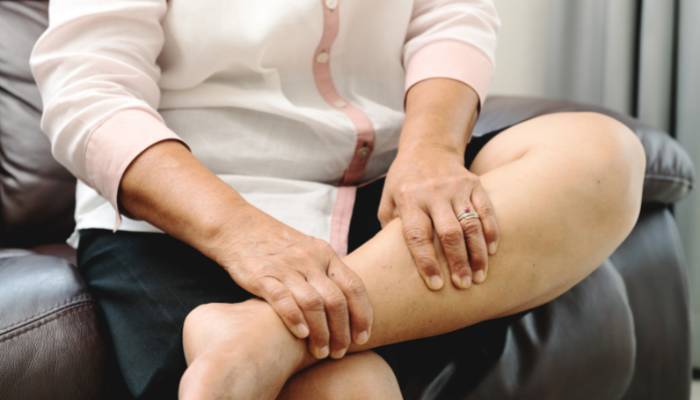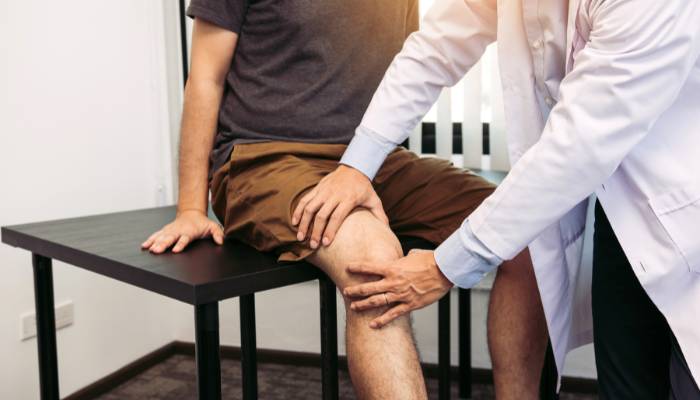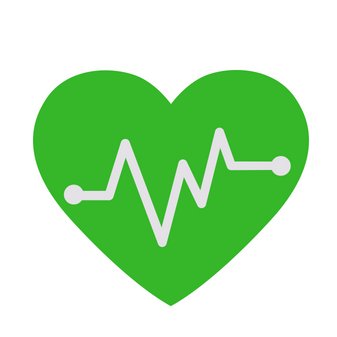Have you ever experienced sudden and painful cramping in your feet or legs? If so, you’re not alone. Cramps in the feet and legs are a common complaint among people of all ages, yet many don’t know what can cause them.

In this post, we’ll break down the causes of foot and leg cramps and share tips on how to ease their discomfort. Read on to learn more!
What is Cramping?
First, it’s essential to understand the anatomy of your feet and legs. Your calf muscles are located on the backside of each leg from just below your knee to your ankle. When these muscles contract suddenly, it creates a feeling that can be described as an intense burning sensation or tightness known as a muscle spasm.
Common Causes of Cramping in the Feet and Legs
A variety of common factors can cause leg cramps. Here are some of the more prevalent causes:
- Dehydration: Without proper hydration, your body’s muscles can become fatigued, leading to spasms and cramps.
- Overuse: If you use your feet or legs too much without giving them a chance to rest, they may start to cramp up as a sign that it’s time for a break.
- Nutritional Deficiencies: Many people don’t get enough magnesium and potassium in their diets, which can lead to cramping in the feet and legs.
- Wearing Improper Footwear: Shoes that don’t fit properly or offer enough support can cause muscle fatigue, leading to cramping.
- Poor Circulation: If your veins aren’t getting enough blood flow, your muscles may spasm due to lack of oxygen or nutrients.
Symptoms of Foot and Leg Cramps
If you feel any of the following symptoms, you are likely suffering from foot and leg cramps:
- Pain: The most obvious symptom of a foot or leg cramp is severe pain. Often, the affected area will feel tight and tender to the touch. It can also be so intense that it causes you to tense up your entire body as a reaction to the pain.
- Tingling Sensation: When muscles are deprived of oxygen, they may tingle or become numb due to lack of circulation.
- Weakness: Cramping can cause muscles to become weak and unable to support weight due to fatigue. This can lead to difficulty walking or standing up straight.
- Swelling: Swelling in the area is another common sign of muscle spasms caused by cramps. The affected area may become red and tender to the touch.
- Difficulty Moving: When your feet or legs are cramping, it can make it difficult to move them due to the pain. You may find yourself unable to stand up or walk without assistance.
How to Prevent Foot and Leg Cramps
Want to keep leg cramps at bay? Here are a few methods that you may find helpful:
- Drink Plenty of Water: Staying hydrated, at least eight glasses a day, is vital to preventing muscle fatigue that can lead to cramping. Doing so helps keep your muscles functioning properly and reduces the risk of spasms.

- Take Regular Breaks: If you’re engaging in activities requiring extended use of your feet or legs, make sure you take regular breaks. This will allow your muscles to rest and reduce the risk of cramps.
- Eat Nutrient-Rich Foods: Eating foods rich in magnesium, potassium, and other minerals can help nourish your muscles and reduce the risk of cramping. Make sure to include bananas, spinach, nuts, and other nutrient-dense foods in your diet.
- Wear Proper Footwear: Investing in quality shoes with good support can help reduce fatigue and prevent cramping. Shoes should fit comfortably without squeezing or pinching your feet in any way.
- Exercise Regularly: Regular physical activity can help improve circulation and reduce the risk of cramping. Add a few minutes of walking or stretching to your daily routine to keep your muscles healthy and prevent cramps.
- Massage: A massage can help relax tight muscles, reduce inflammation, and promote circulation in the area. If you have a cramp, gently massaging the affected area can help relieve muscle pain and reduce the duration of the spasm.
- Stay Cool: Overheating can lead to muscle fatigue that can result in cramping. Make sure to stay cool by drinking plenty of fluids, wearing loose clothing, and avoiding strenuous activities in hot temperatures.
- Avoid Certain Medications: Some medications like diuretics and statins can reduce the amount of electrolytes in your body, leading to dehydration and increased risk of cramping. Tell your doctor if you take any medications contributing to foot or leg cramps.
When to See Your Doctor
When all remedies you’ve tried don’t work, or your cramping is severe and persistent, it may be a good idea to consult a professional orthopedic surgeon. Some medical conditions can cause muscle cramps, such as diabetes, thyroid disease, peripheral artery disease (PAD), and electrolyte imbalances.

Your doctor can help you diagnose these conditions and provide treatment options that will help reduce the frequency of your foot or leg cramps.
Additionally, if you experience any swelling or redness in the area or have difficulty walking due to pain, make sure to contact your doctor immediately for further evaluation. Taking care of muscle cramps early on can help prevent more serious issues.
Long-Term Complications Associated with Chronic Foot and Leg Cramping
Chronic foot and leg cramping can cause long-term complications such as muscle weakness and atrophy if left untreated. Repeated cramping can also lead to an increased risk of injury due to inadequate preparation of the muscles for physical activity.
Chronic cramps can interfere with sleep quality and make it difficult to remain active during the day, affecting your overall health. It’s crucial to talk to your doctor if you experience persistent or severe foot and leg cramps so they can help diagnose any underlying medical conditions that may be causing them. Early intervention is vital in managing chronic pain and avoiding long-term complications.
Beat Leg and Foot Cramps
Foot and leg cramping can be an annoying and painful issue, but you can take many simple steps to find relief. Taking care of foot and leg cramps early on is critical to avoid long-term complications. With some knowledge and proactive self-care strategies, you can keep muscle cramping at bay.

Lifebing is driven by an unrelenting passion for promoting health and well-being, our team is wholly committed to curating exceptional content and immersive experiences.
